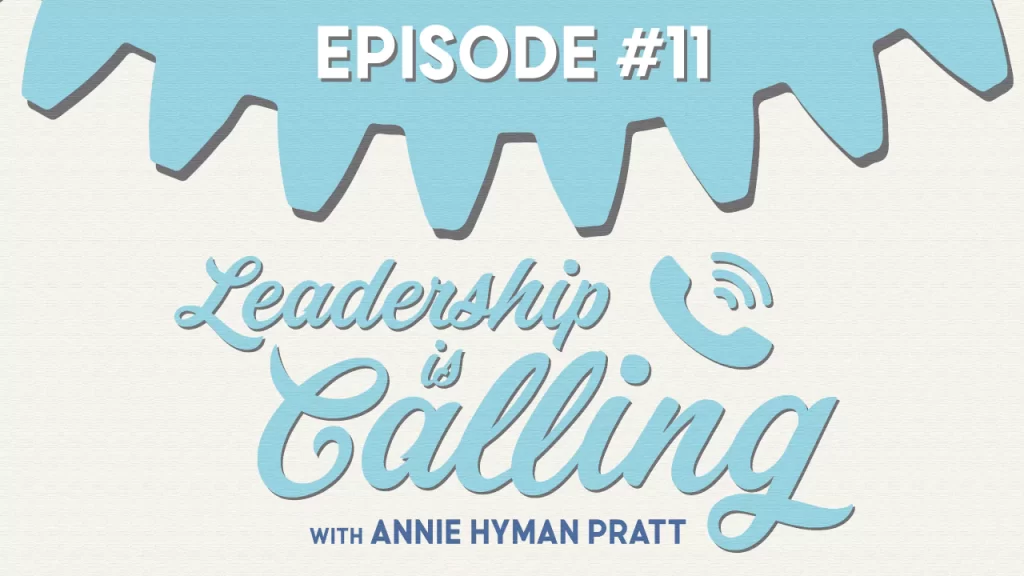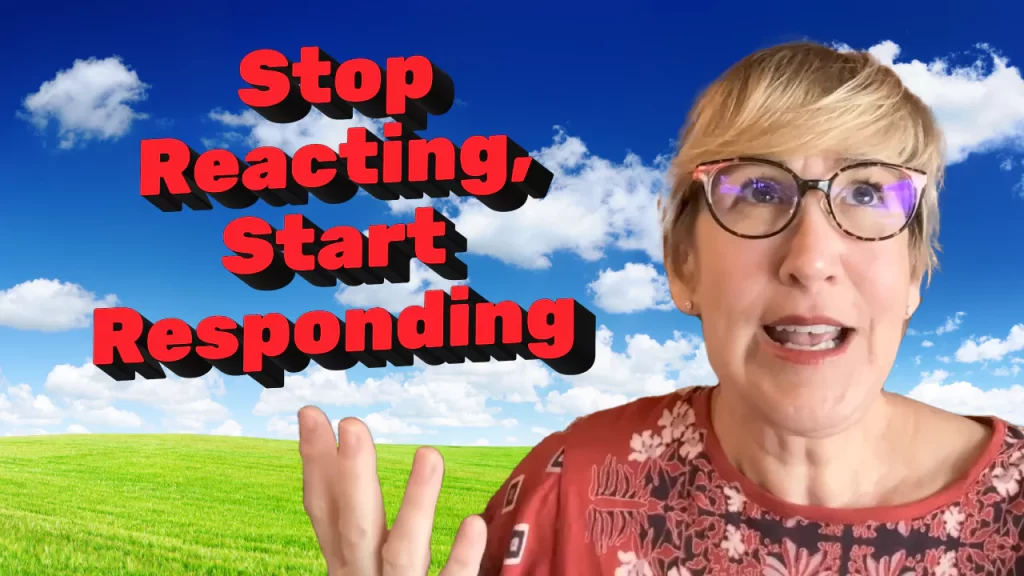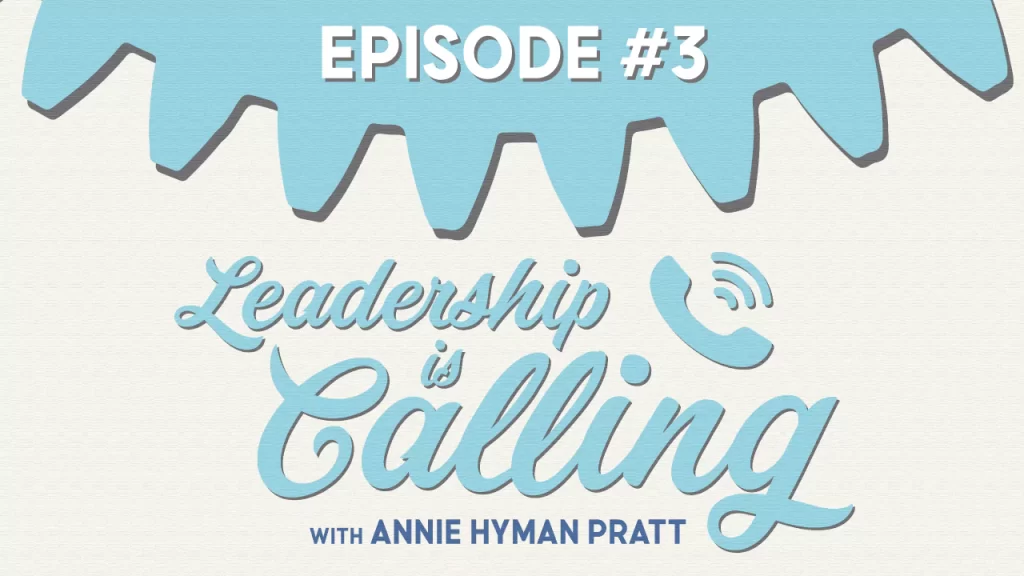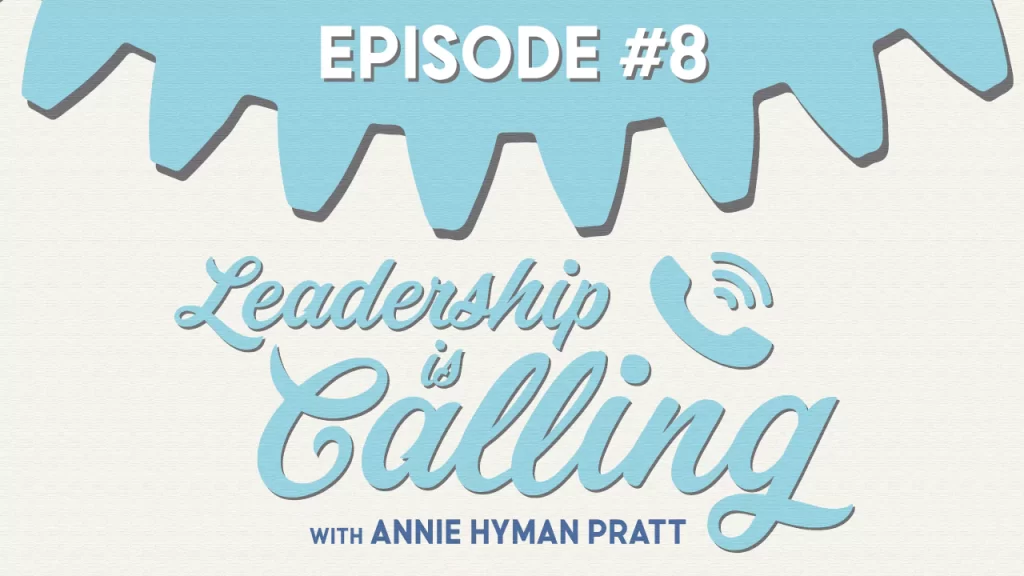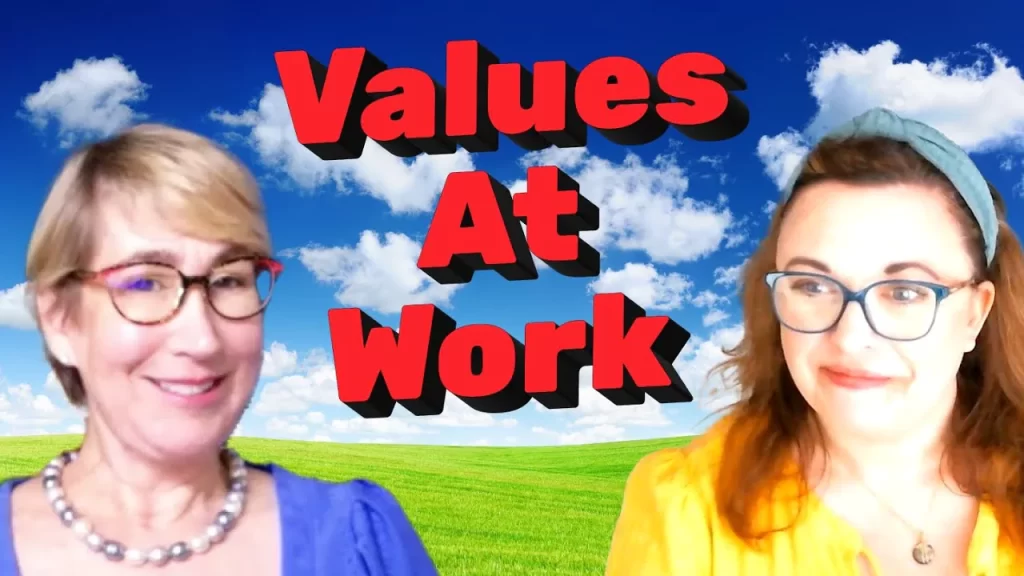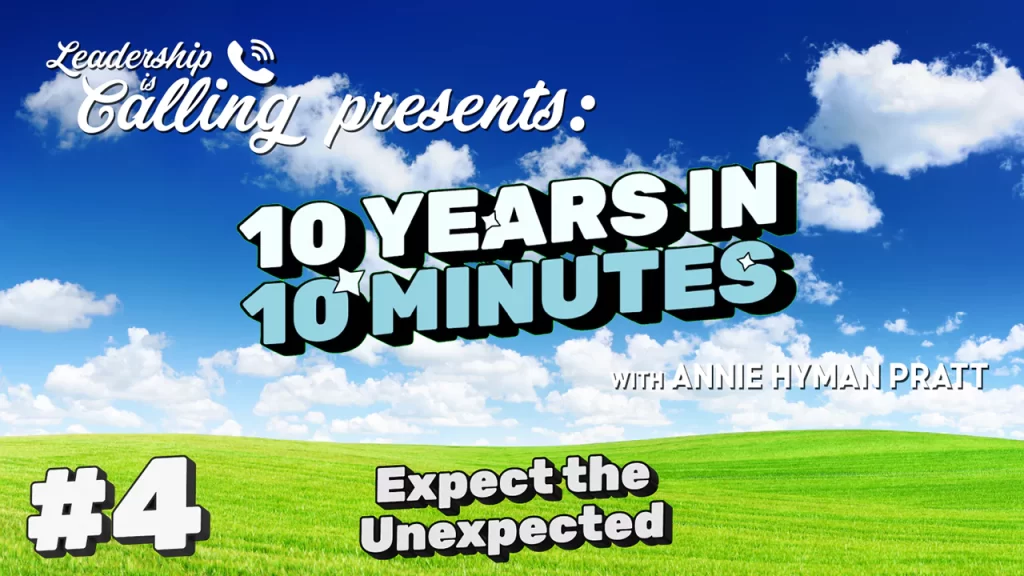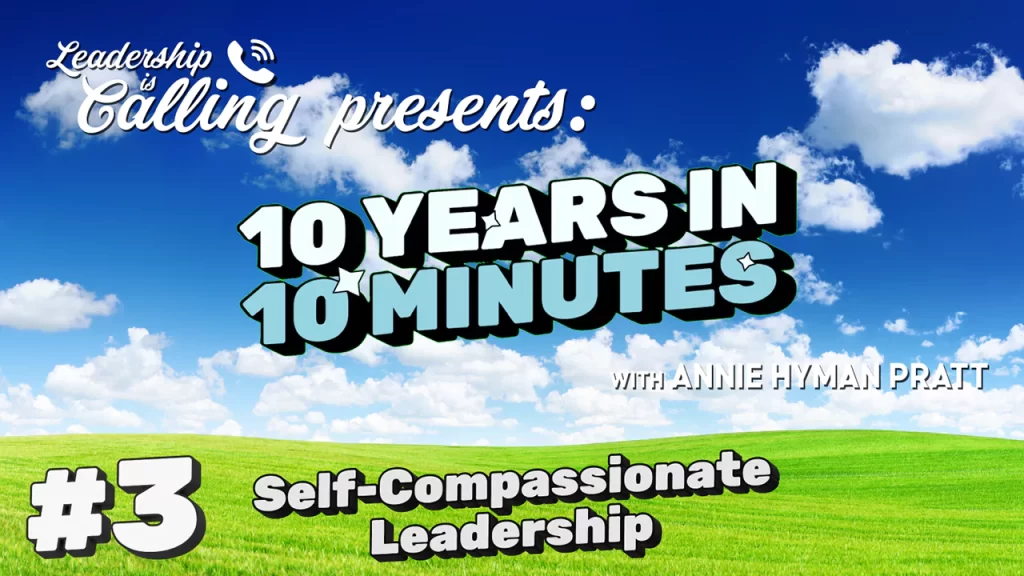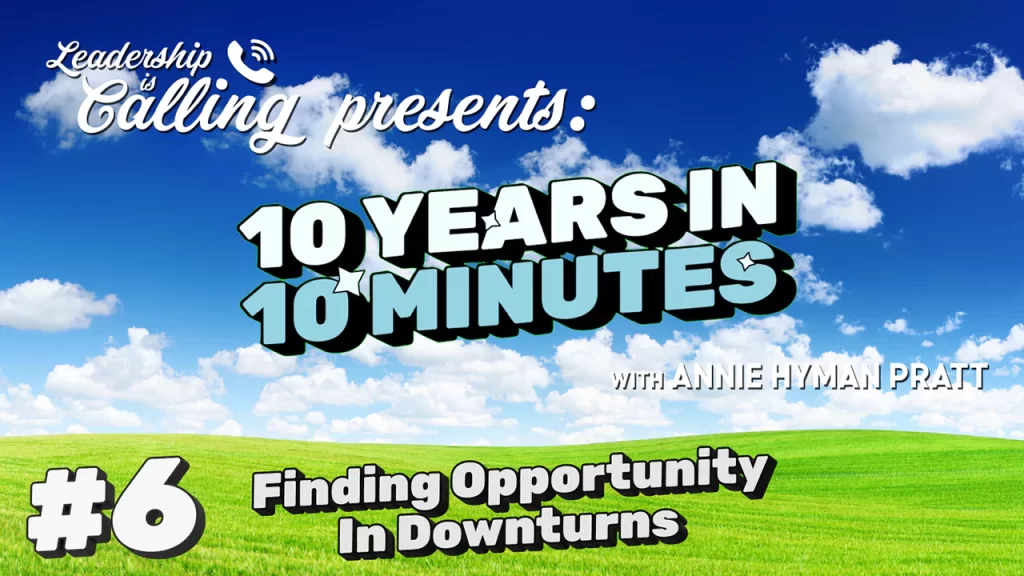Episode #24: How to Build a Culture That Drives Results
Leadership is Calling Episode #24, 10 Years in 10 Minutes Series #13
Annie Hyman Pratt
- Description
- Transcript
How to Build a Culture That Drives Results
“To have a good culture, the very first thing we have to agree on is where we’re going.” -Annie
Learn the 4 main components of a great company culture from business coach Annie: self-leadership, clear outcomes, agreements, and secure relationships.
In this video, I’ll discuss the importance of self-leadership in business and how you can create a culture of self-leadership in your organization. I also discuss the importance of culture in the workplace and how to create a great work culture. I cover four key areas:
- Self-leadership: Employees need to be able to control their own emotions and behaviors in order to create a positive work environment.
- Clear outcomes: Employees need to know what is expected of them and what they are working towards.
- Agreements: Employees need to agree on the rules and expectations of the workplace.
Secure relationships: Employees need to feel safe and supported in order to be productive and engaged. - Secure relationships: Employees need to feel safe and supported in order to be productive and engaged.
Self-leadership is essential for business success because it allows you to:
- Achieve your goals more effectively.
- Be more productive and efficient.
- Be more motivated and engaged.
- Handle stress and adversity more effectively.
- Build stronger relationships with your team members and customers.
If you’re looking to improve your self-leadership skills and create a more successful business, I encourage you to watch this video.
Key Points
- Self-leadership is essential – team members must regulate emotions rather than react.
- Agree on clear outcomes so everyone knows the destination.
- Establish rules of behavior and situational agreements.
- Secure relationships build trust and support.
Related Resources
More Information: Self-Leadership
Articles: Psychological Safety and Secure Working Relationships
Downloadable Infographic: The Key Basics of Agreements

Auto-Generated Transcript – unedited version
How to Build a Culture That Drives Results
Hi everyone. It’s Annie here for another one of my ten years and 10 minutes talks. Today I’m going to talk about culture and specifically what makes up a great culture, like the anatomy of a really effective culture that, you know, creates a business that is not only successful, but a business that you and your team love working at.
All right? So there are kind of four main components of a great culture. The first component is, if you’ve heard me talk, you might already guess what the very first component is. But the very first component is self leadership. And let me backup for a second, too, and say kind of what the definition of culture is, because there’s a lot of confusion around that, frankly.
You know, and you hear here quotes like “culture strategy for breakfast.” You know, “you have to have a great culture.” “You don’t want a toxic culture.” And it’s like I definitely have had people ask me, like, what does that all really mean?
So here’s the thing. Culture is basically how people – how team members – habitually behave as they’re working together to get a result, how they habitually behave. Like when you come in, do you see people – let’s say this is – let’s say we’re in an emergency room. Where do you see people in an emergency room, you know, moving swiftly so that they are prepared with all their stuff, that they know all of the things to yell out, that they don’t yell out things that are not helpful, like “Hey, this guy over here!” Like, I feel like that they do, that they behave in ways habitually that you can count on that actually helps drive the result the best.
So when we’re working with humans, the very first thing that we need for a good culture is people that are actually in control of their own behavior. That means that you’re in self leadership. Now the opposite of self leadership you’ve probably heard me talk about hopefully is self-protection. And what self-protection is, is it’s when you are emotionally reactive, what that means is you are experiencing emotions like fear or anger or resentment or anxiety or whatnot. And at that point, you will say or do things that you wouldn’t have done if you weren’t emotional. Right?
And we’re human. We all do it. But in business, we want to learn to become more and more able to regulate our emotions so they don’t drive our behavior. And that’s what self leadership is. We’ve got to start there. We can’t even all do things the same way in a culture if nobody’s in self leadership, right? They’re just we just all reacting all over the place. And that’s pretty much the opposite of a good culture.
All right. So that’s the first thing. The second thing that we need are clear outcomes. Also, if you’ve heard me talk before, I almost can’t talk without talking about outcomes because this is the game of business. We come together in business, people come together to produce results. That’s the point. Financial results, customer results, world impact results, all kinds of different results. That’s the point. It’s like, what are we going for?
And to have a good culture, the very first thing we have to agree on is where we’re going. It’s like, you know, if we were getting on a plane and some of us thought we were going to France and, you know, other people thought we were going to Bali, like that would not work out. We we need to be going to the same place and have a very similar understanding of it. Okay? That’s the second thing.
The third thing is agreements and agreements are how people work together to get results. And there’s two kinds. Okay. I know that sometimes agreements can seem like a kind of a funky concept, but I’m going to break it down into two different kinds of agreements.
So the first kind of agreements are rules. I’ll just call rules of behavior. This is often also called structure. So your role, your role description, the fact that you have a role that does specific things in it is a structure. It’s kind of like a rule of behavior. You know, if you’re in finance, one of your rules of behavior is that you’re going to be, you know, taking care of customer payments. Great. Somebody in marketing will not be doing that. We can count on that, that we have some kind of ongoing rules that don’t change or don’t change often. That’s how I think of this part. The structure part is the definitions we put in place so that we don’t have to keep rethinking, “Wait, what am I doing today? I forgot what I’m doing today.” Since we have it in a structure, since we’ve set it out so like, I can learn it and then you know, in the future, something might change. The chances are my role will look the same tomorrow as it does today.
All right, So this is the first part. There’s other kinds of structure. Team meeting agendas is the piece of structure, right? Using communication tools like Slack or Asana, that’s a piece of structure. It’s like we all agree to use it. It’s kind of a rule, but an agreement, right? Okay, great. So that’s the first kind.
All right. The second kind are situational agreements. These are the agreements that we are constantly making and revising with the people we’re working with. These are the agreements of like, which project are we doing right now? Which one are we doing first? As we are going along, we may change our mind and say, “Oh my gosh, you know what? I thought that we were going to make this new… I thought we were going to be able to make the new product before the end of the year. But now I can see that the upcoming membership launch is more important. Let’s change the agreement. Let’s shift it up.” This is where we need to have agreement so that we understand what all of us are actually doing.
It’s like this is the thing we need to rely on. I have a sense I know what you intend to do tomorrow based on our agreements. Okay, so these are huge. This is often where cultures break down and often because they don’t realize that these situational agreements are a sophisticated skill, but a skill you absolutely every company can learn. The team members can learn how to make these agreements that really work. Group agreements. These aren’t these. These sometimes are one on one agreements for sure, but often they’re even group agreements.
What people in companies tend to think is we just need more rules, more structure. It’s like, this is this. This would be great if nothing ever changed. But this is business. Everything changes all the time, including we’re humans. We don’t do things perfectly. We don’t plan perfectly. We don’t perform perfectly. You know, this is it’s just not – We need the flexibility to keep looking at what just happened. Now, what do we need to do? Right?
Okay. And then the last part is secure relationships. Why? This is here at the top because when we have these pieces in place, it is so much easier to keep your relationships secure. And what is it your relationship is? It’s not a relationship where you know everything about your coworkers. And, you know, that’s not it. It’s totally okay If you know everything about your coworkers and you guys go to lunch all the time and you know, you play softball on the weekends, that’s all fine. But the part about secure relationships in business is that we each trust each other, that we won’t do something in our own self-interest that hurts our team, that hurts another team member that we will.
I think the easiest way to say it is that we will have each other’s backs, that we will think about how we do impact the success of somebody else, of everybody else. And that’s much easier to do when we can rely on that. You know, people are not being run by their emotions when we all know where we’re going together, what success looks like, what is our destination that we’re all you know, we’re all on a boat going to the same destination. And then when we have agreements, these are the things again that we can rely on that we don’t have to keep thinking about.
I don’t have to think about it. Somebody’s going to do my job tomorrow. I know what jobs we all do. And if somebody does do my job tomorrow, I’m going to be like, What? What’s happening here? Like, this is, you know, I thought we had it all worked out. Well, go back to the, you know, the structure, to the rules of the structure. This is the place where we know if we have a disagreement or differences or we see things differently, we know that we can work it out because we have situations and agreements. This is where we each have a voice, where we each have some agency over what we’re doing. We can talk about it and come to an agreement because guess what? We’re all going for the same outcomes.
And when we have these, we automatically get secure relationships. When we have the time, we are able to think more about less about ourselves. I’ll say it that way, less about what people are doing that I have to protect myself from. We can drop, though, that kind of thinking, which is the worst, by the way, because then nobody’s working on the outcomes we’re all worried about how this is going for me? And instead I can think about what I am doing now and how it supports other people?
Let me take a moment to think about how my actions are going to impact, you know, somebody that I also want to be successful and I know that they’re going to be thinking the same for me. Somebody shared with me that the way Navy SEALs work is that they, you know, I guess as a soldier or whatnot, it’s very hard to have your own back. Right? We don’t have eyes in the back of our head. So the Navy SEALs, they know that some you know, that somebody else is protecting them and they’re focused on who am I protecting, whose back do I have? And I don’t have to worry. I know that somebody also has my.
Okay, So all of this is the anatomy of a great culture, we have an acronym for it and we call it saw s0a or for self leadership outcomes agreements. Right, which this kind of guys and relationships courses. I’ve been working with people for three decades now. We got the least I know more and more and more how true this is. You know we kind of break it down into an acronym like this. It it’s, it feels simple, which I want people to at least have that feeling of like this is not it’s not rocket science. You know, it takes skill, it takes learning. It’s also not, you know, easy to add. It’s not like the thing you learn in first grade or something, but it absolutely is learnable. It absolutely has a kind of a science of business behind it. And as humans working together, when we do have a great culture, we reduce or not. And not just the business like the people within the business saw as well. So that’s what we’re really going for in a great culture. And I’m, you know, delighted to have spent the time with you today and I look forward to seeing you next time. Thanks, you guys.
To learn more about this episode’s topic, pick up a copy of my book, The People Part at your favorite book retailer.


